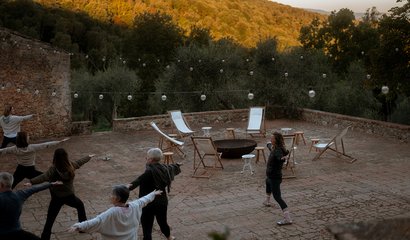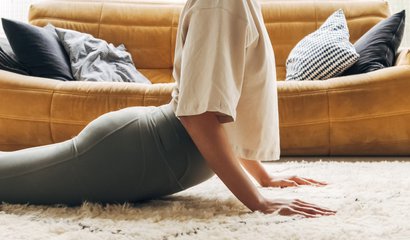Nov. 29, 2017
Sustainable Yoga Series: Sun Salutation
Sun Salutations are ubiquitous in yoga. Usually found at the beginning of a practice, they are traditionally done as a warming-up, flow type movement. No matter what version of a sun salutation we are doing, the movements are mostly in one plane of movement.
Sun Salutations are ubiquitous in yoga. Usually found at the beginning of a practice, they are traditionally done as a warming-up, flow type movement. Depending on which yoga tradition, you will find a few different variations of sun salutations. Many people love sun salutations because of the mindful flow, connecting the breath to the body allowing you to become more focused and aware.
The flow, the breath and the focus are all important aspects of a well-rounded practice. Yet no matter what version of a sun salutation we are doing, the movements are mostly in one plane of movement. Is it because the ancient yogis felt that this was the most important way to move? Probably not, especially as most of the ancient yoga texts mentioned very little about movement, let alone any mention of "sun salutations". In his book, "The Yoga Body, Mark Singleton argues that the sun salutation as we know it today is "a mixture of yoga as medical gymnastics and body-conditioning on the one hand, and state of the art dumbbell work and freehand European bodybuilding techniques on the other." (Singleton, 2010: p124)
By most accounts, the sun salutation is a more modern addition to yoga and is now deeply embedded into many different yoga styles and schools. As the body exists on a three dimensional plane, we should move as such. As a culture, we don't move enough and when we do it is usually in one plane. To update our sun salutations so that there is more whole body movement, we need to examine how to move and wake up under-used and under-moved body parts in context to YOUR daily life. Then combining that with attention to your breath brings the sun salutation to a whole new level.
Not only that, but we have to examine the repetitive nature of traditional sun salutations. If you have a regular practice of yoga that includes sun salutations and you never change up the way you move through them, that can easily set you up for some repetitive stress injuries. Remember, the tricky part of repetitive stress injuries is that they don't happen right away. So you can be practicing for years and feel great until one day, one wrong move, most likely when you are doing something OFF the yoga mat, you get injured.
So what are the three planes and how do we move in them?
Saggital: Divides the body left and right. Extension and flexion mostly happen in this plane. Much of the movement we do in yoga and everyday life are in this plane. Walking, running, biking, sitting and so on. I like to think of army marches, where the arms and legs are very straight and swing directly forward to back as a good example of moving in the saggital plane.
Transverse: Divides the body top to bottom. Most of the movements in this plane are rotational. Joint movements happen mostly in this plane. Two of our biggest sets of joints tend to not get enough movement in the transverse, we tend to move them mostly in the saggital.
Frontal (or Coronal): Divides the body front to back. Movements in this plane are sideways movements called adduction and abduction.
The video below is a simple example of one of the ways that I like to update my sun salutations. I've added some foot and lower leg mobilizing and strengthening movements in the form of the squat rocking. In the lunge I've added some side stretches. And in plank some scapular mobilization and awakening of some of the upper thoracic muscles. You will notice there is no upward dog or chaturanga.
I sometimes add those into my sun salutations but I also spend a lot of time working on shoulder strength and mobility in a variety of ways in my daily life or in other parts of my yoga practice, so I left them out in favour of the lower leg movements. Just think about the places in your body that need more love, that need more movement. Then incorporate those areas and movements into your sun salutation. So simple!
Now there are no hard and fast rules here. Once you decide in bring movement into all three planes for your sun salutations, it is already going to be making more positive changes in your body. Change is good and changing your movement patterns, especially in your yoga practice and in your sun salutations can do a lot of good.
Curious about a sustainable approach to yoga?
You'll get to explore different versions of sun salutations and so much more in our online yoga studio




